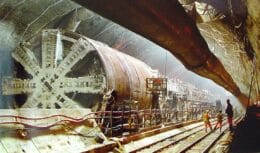
Investment of BRL 2,6 billion in a project that started in 2016, Scania starts the production of trucks powered by alternative fuels, CNG
In São Bernardo do Campo, in ABC Paulista in the state of São Paulo, the Scania started last week the production of trucks powered by CNG (natural gas), biomethane (obtained from organic waste) and LNG (liquefied gas). Linked to the EJA e Sete Brasil shipyard, a former Sembcorp Marine employee is accused of money laundering and corruption in a rig contract
Check other news:
- Project opens free training vacancies for women in civil construction
- Gasoline and diesel retreat at stations after Petrobras cut prices at refineries under threat of coronavirus
- Event in Vitória will have registration for job openings in civil construction
Brazil, behind only some European countries, is the only one to produce vehicles of this modality, and that, in the coming days, will start exporting vehicles, starting with Argentina.
CNG and LNG trucks are also able to use biomethane, regardless of the proportion, which characterizes them as flex-fuel vehicles. The company has been producing such vehicles since 2014, at its headquarters in Switzerland. In Brazil, the start of production is unprecedented, considering that imports of the product already occur, but never production.
Investment of BRL 2,6 billion in a project for products powered by alternative fuels that began in 2016, a good portion of which has already been consumed, between 2016 and 2020. However, the expectation for the next steps is the production of hybrid vehicles, scheduled for 2021 to 2024, in its new investment program. After that, in the long term it will be the turn of electric vehicles.
Due to the low production scale, the prices of the new vehicles are around 30 to 40% above the existing versions, powered by diesel, which cost from R$ 400 thousand.
In São Bernardo do Campo, the Scania factory is the second largest in the group in terms of production capacity – 30 units per year. Currently, the factory has 4 employees and uses around 75% of its capacity. What is expected, if the demand for products increases, is that there will also be an increase in capacity and the generation of new jobs.














Air Force F-16 fighters…
True friend, what they shot down were…
Air Force F-16 fighters…
I would like to know what planet you live on…
Air Force F-16 fighters…
Well... It's flying scrap... Typical...
They discover the third largest deposit…
That’s why all foreigners and NGOs…
Air Force F-16 fighters…
Which genocide are you talking about? Than…
An excellent tool, but as always…
I bought a Fiat Strada Freedom double cab…
This journalist, I think it is, who…
It will be in automatic mode
I already had all the monzas, I would change them…
I've had two roads, the last one...
I am interested in training in…
I would love to know about the height of the front,…